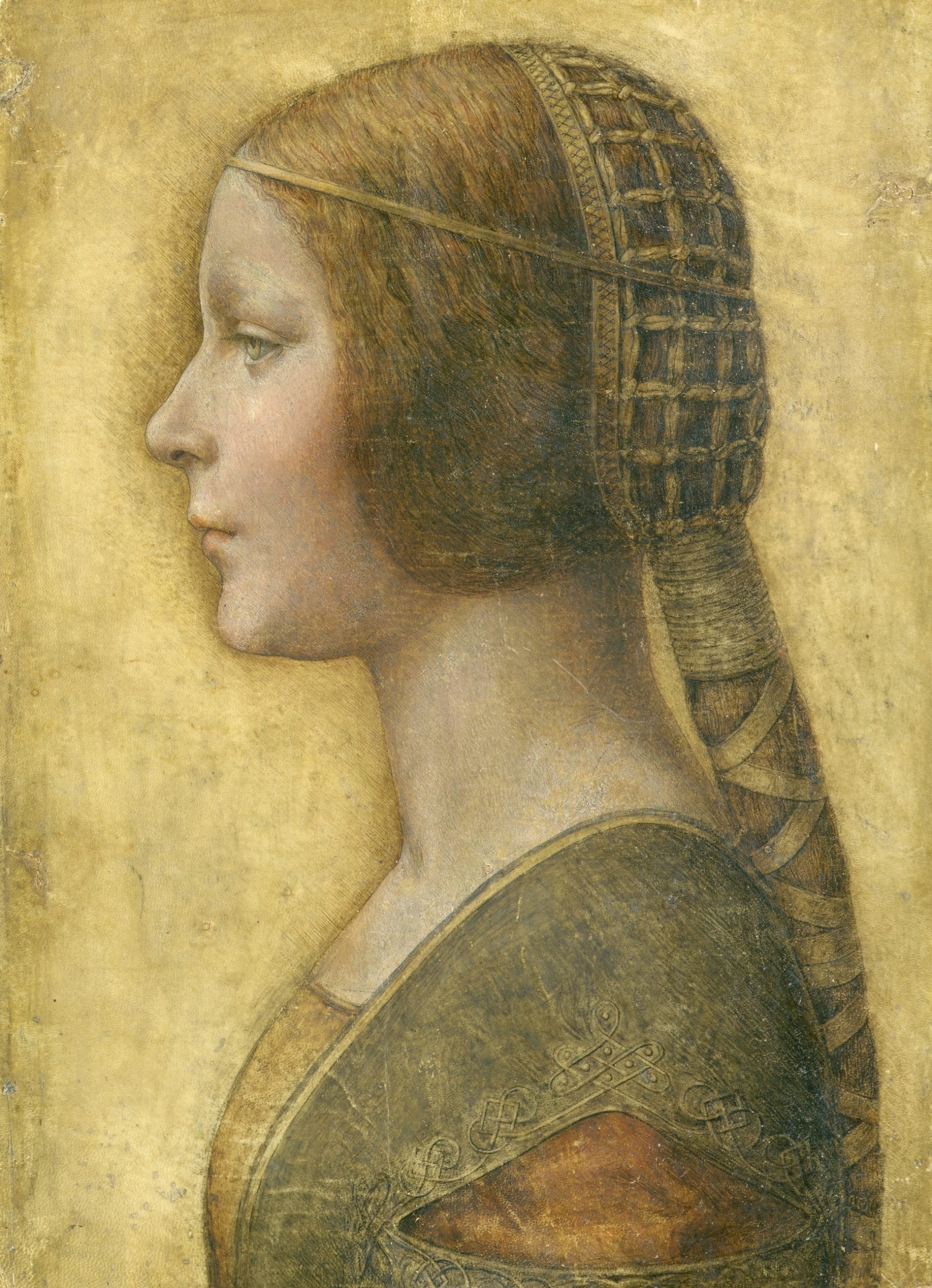
In 1997, Christie’s offered for auction a painting that the house thought had originated in 19th-century Germany. Tentatively titled Young Girl in Profile in Renaissance Dress, it sold for about $22,000, according to the Artnet Price Database, to New York gallery owner Kate Ganz.
Ten years later, art collector Peter Silverman walked into Ganz’s gallery with a friend. Both men noticed the painting, which Ganz was putting up for sale—Silverman because he had participated in Christie’s auction, his friend because the image, with its delicate features and sfumato effect, looked neither 19th-century nor German.
Convinced there was more to Young Girl in Profile than it seemed, Silverman bought the painting and began showing it around to art historians, many of whom said it reminded them of the work of none other than Renaissance master Leonardo da Vinci.
The possibility excited Silverman. “A Da Vinci coming out of the woodwork, just like that,” he later told CNN. “I was puzzled, sort of stymied.”
Their suspicions were seemingly confirmed when, in 2009, scientists from the Paris-based laboratory Lumière Technology took multispectral images of the painting’s pigment layers and found a fingerprint and palm print that matched those previously discovered on two other works by Leonardo.
“Leonardo used his hands liberally and frequently as part of his painting technique. His fingerprints are found on many of his works,” Peter Paul Biro, a forensic art expert, told the Seattle Times at that time, explaining that the newly discovered print was a match with that found on St. Jerome (c. 1482).
Wall text at the Met shows an enlargement of Leonardo da Vinci’s St. Jerome featuring the artist’s fingerprint. Photo by Sarah Cascone.
Art historian Martin Kemp, a world-renowned Leonardo expert and early believer in Young Girl in Profile, which he rechristened La Bella Principessa, celebrated the discovery by authoring a 200-page book of the same name. In it, Kemp argues that the woman in the painting, completed around 1496, was Bianca Sforza, daughter of Ludovico Sforza, Duke of Milan, and his mistress Bernardina de Corradis.
Because La Bella Principessa was painted on vellum, or parchment made from calf skin—the only known Leonardo to be painted on this material—Kemp speculates that the artist may have made it as a cover for one of Sforza’s books, rather than as a standalone artwork. Vellum was, after all, mostly used at that time for the binding of manuscripts.
Not everyone in the art world accepted this new argument for the painting’s authorship. In 2011, a Leonardo retrospective organized by the National Gallery in London declined to feature La Bella Principessa because its curators did not find the evidence convincing enough. At the same time, they did include Salvator Mundi, another painting whose attribution to Leonardo remains hotly contested.
Leondaro da Vinci, Salvator Mundi, ca. 1500. Courtesy of Christie’s Images Ltd.
If the controversy surrounding La Bella Principessa’s authenticity wasn’t great enough, it only grew when, in 2015, famed British art forger Shaun Greenhalgh took credit for creating the painting. In his memoir A Forger’s Tale, Greenhalgh claimed that he painted the picture in 1978 while working at a supermarket.
The sitter, he wrote, “was based on a girl called Sally who worked on the checkouts. Despite her humble position, she was a bossy little bugger and very self-important.” To make the forgery appear old, he allegedly used a document from 1587 as a canvas, supported by the lid of a Victorian school desk.
Greenhalgh’s account didn’t convince everybody, either. Kemp believes the painting was produced much earlier than 1587. Moreover, in the wake of Greenhalgh’s memoir, further testing revealed that the pigment of La Bella Principessa is itself more than 250 years old, meaning it could not have possibly been created in the 20th century.
Critics and commentators may never be unanimous on who painted La Bella Principessa. But, it seems, they can at least agree that it wasn’t Greenhalgh.
What’s the deal with Leonardo’s harpsichord-viola? Why were Impressionists obsessed with the color purple? Art Bites brings you a surprising fact, lesser-known anecdote, or curious event from art history.